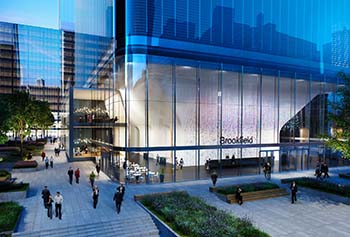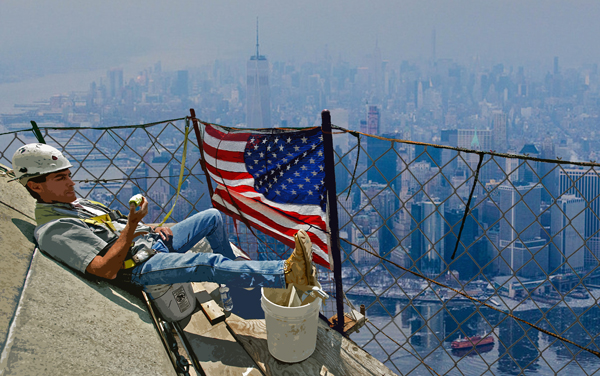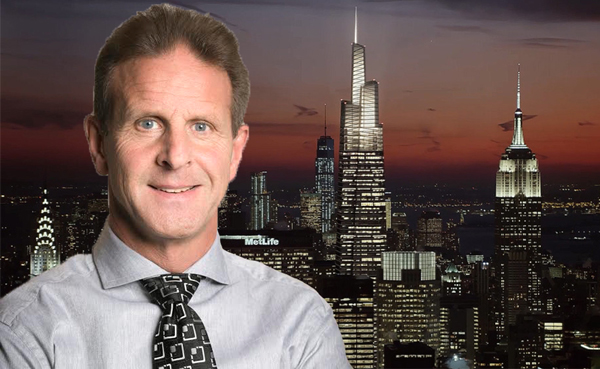Leading up to the opening of the Second Avenue Subway extension in January, Gov. Andrew Cuomo walked the station two to three times a week. At one point, he started counting the workers in the station on the weekend to make sure the contractors had given him truthful headcounts.
“The general contractor, he’d come down and ask me, ‘How many guys are you going to have on the weekend?’” Navillus CEO Donal O’Sullivan recalled. “I’d say ‘25.’ And he’d say, ‘Are you sure you are going to have 25? Because he’s going to count you guys!’ And he did. But he got it done, and it wouldn’t have gotten done without him.”
Navillus, which did masonry, tile and other work on the project, has worked extensively on New York City’s subway system and has taken on several major public projects over the last 30 years, including the 9/11 Memorial and the renovation of Grand Central Terminal. O’Sullivan, 56, came to the United States from southwest Ireland in 1984 and found work at a tile company. Three years later, he set off on his own and formed a tile and masonry business that would eventually take on concrete and general contracting work as well. His three siblings worked at Navillus in its early days, but his two brothers, Kevin and Leonard, have since gone their own way. (Kevin O’Sullivan formed his own development company, and Leonard returned to Ireland). His sister, Helen, is in charge of the company’s payroll.
Today, the company’s taking on the concrete superstructure of Brookfield Properties’ One Manhattan West, a 1.65-million-square-foot office tower at 401 Ninth Avenue, and for SL Green Realty’s One Vanderbilt, a 1.6-million-square-foot office building in Midtown East. The company, which works exclusively with union labor, is also now competing for work at the Jacob K. Javits Center, which is undergoing a $1.5 billion overhaul.
As part of a new questions-and-answers series with construction bosses in New York City, The Real Deal sat down with O’Sullivan in Navillus’ office at 633 Third Avenue. He answered the following questions in a thick Irish brogue:
Where do you live in the city?
I don’t live in the city. I’m a Queens man. In Douglaston. I’ve been there for 25 years. I couldn’t move the kids. They had their friends and clubs. They are all getting grown up now. Two of them are at Notre Dame. I’ve got one kid in Peru. They’re all scattered.
How many kids do you have?
I have six kids. My youngest is 10. She’s 10 going on 50. Just remember that the youngest one is always going to be the one who is really going to boss you around. Big time.
You came to the U.S. in 1984. Where in County Kerry are you from?
Ballinskelligs. What we’re most famous for, we’re really on the map now, is “Star Wars” filmed the end of their last movie at the Skelligs rock, which is seven miles out to sea from where I am. Who’s the guy who goes missing then he comes back at the end of the movie?
Luke Skywalker?
So, they find him on the Skelligs rock. It’s as far back as you can go in Ireland. We’re back in the hicks. You can’t go any further back. If you go any further east, then the next village is New York. We’re actually the closest point to New York in Europe.
Did you do tile work in Ireland?
I did a little bit of brick work in Ireland. I became a tiler on my way over in the plane. Transatlantic trade!
It was easy enough to pick up. I remember I was only working here a few months or so, and we were doing subway stations, which were a great challenge to me. You had these 600-foot-long platforms to get down. Just, logistically, setting it up and coming up with new ways to make things move quicker, these were great challenges.
How’d you get into concrete?
In 2004, we were building a lot of skins on high-rise buildings in the city. We felt like we were always catching up with the guys ahead of us, [who were] doing the concrete work. We decided to do the concrete work so that we’d move up faster, and we could only be in our own way.

Rendering of One Manhattan West
Why did you bid on the World Trade Center Memorial?
If someone asked me today what was the most important building you ever built, I’d say the 9/11 Memorial because of what it was.
Most of the contractors [at the time] were entwined in building private high-rise buildings. Nobody wanted to look at that job. There’s a lot of bureaucracy tied in with public work, as everybody knows. You’ve got to be prepared to deal with getting paid, which final payments can often be three, four years down the road. When we started our masonry work, we started doing a lot of schools, a lot of subway stations. We were well-trained in all the bureaucracy that’s involved with the [public] agencies, and we also had a great relationship with them. The memorial was no different.
What are some of the challenges of working on One Vanderbilt?
You’re right in Grand Central Terminal. The amount of people that are there — that has presented its own challenges. [It’s] a little different way of building. The steel is actually going there first, and then we’re coming through the steel with our work. So, while we’re not the lead person pushing the schedule, it’s complicated to build our work within their work. But you work through it every day. Every day you try to make it better or safer.
How do you deal with shifts in the market, like the decline in demand for high-end residential work?
We diversify a lot to make sure that we stay focused and stay growing. Over the last two years, we’ve done a lot of [Hurricane] Sandy work. You’ve got to follow the markets around and make sure you’re going in The Right Place and look at what’s coming out in the next two years. Sandy work, everybody’s doing it now. You had three bidders, now you have 20 bidders with every project. With that, the prices are getting too competitive. So, you have to look at the next niche in the market? Where’s the next bunch of money coming out?
Where do you think that’ll be?
I would hope infrastructure. I don’t take the train that often, I Usually Drive to work, but I walked out of Penn [Station] some morning and, I could not believe the amount of people. It was like walking out of a football stadium. It’s just jam-packed.
How has the growth of open-shop construction in the city impacted your business?
Open-shop has really had a huge effect on our business over the last few years on our concrete business. That’s going to drop off quite a bit on the private side. There’s a lot of nonunion concrete work. The public side, that will always stay union. We just shift focus a little bit and move along with the more public work for a while.
Do you think union construction is inherently safer?
I think it was always that way. That being said, the nonunion companies have increased their safety over the last couple of years. I think that might be forced by the unions saying, “We have much safer companies.” They had to get their game up too. Still, I would say, in an overall picture, I would say union contractors are safer.
Do you ever work with your brother Kevin, who runs Times Square Construction?
He’s an open shop company. I don’t do any work for them. I’m just an equity investor in some of the buildings.
You and a crew from Navillus went out to the Rockaways after Hurricane Sandy to help residents devastated by the storm. What was that like?
There were cars up in six-foot piles of sand. There wasn’t a soul in the street. There was no one. It Was Like The Whole Place got bombed. I set up a little tent and a sign that said, “Anybody who needs help come over here.” I’d say, within an hour, we had a line of people. It became the main distribution center for the Rockaways. We had Thanksgiving dinner there and kept it up through January. New York people in times of crisis are great people.
How often do you go back to Ireland?
I go back every eight to 10 weeks. My mother is elderly, she’s almost 90. My brother’s here also, and my sister works with me here, so we kind of take it in turns every eight weeks to go back, so there’s constantly someone home, pretty much. That’s why I haven’t lost my brogue.

Think there’s a construction boss we should interview?
Email kathryn@therealdeal.com (Photo illustration by Lexi Pilgrim for The Real Deal)
